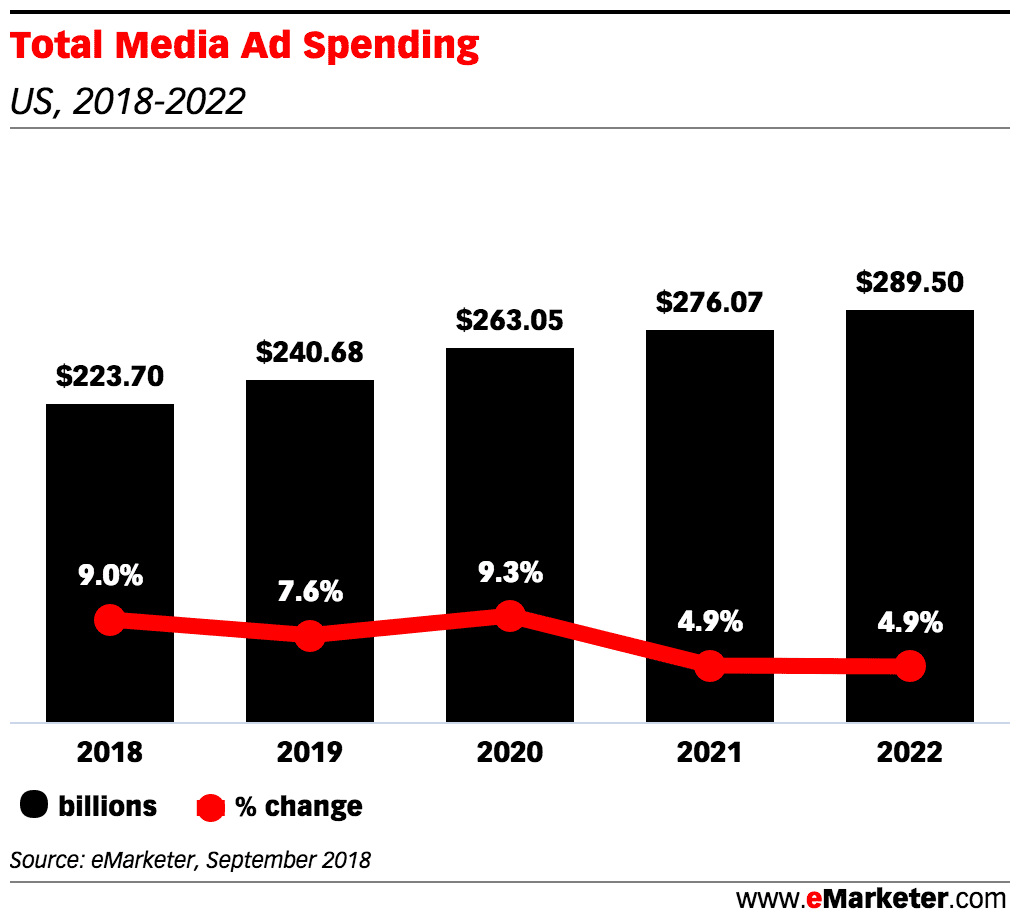With its ability to boost brand awareness and deliver strong returns, TV advertising is undeniably powerful. However, brands have traditionally used sales attribution tools or custom sales lift studies as a way of measuring the success of their TV ads — but these methods require longer wait times and lack the ability to tell a complete story. This in turn has prevented them from fully understanding their TV and cross-channel investments and being able to optimize their media spend accordingly, which is essential to achieve maximum ROI.
Since marketers are projected to increase their media spend by nearly 30% by 2022, it’s more important than ever that you understand which advertising campaigns of yours are driving results and which aren’t, so you can adjust your strategies accordingly.

What’s more, looking at campaign results over time can reveal which channels are generating the most ROI for you. Based on your findings, you can then reallocate media dollars to the most effective channels in order to maximize your results and be as efficient as possible. Not only will this help your department and company as a whole, but it will help you stand out to your manager.
So what’s the secret to measuring your TV campaigns? Footfall attribution.
Footfall Attribution for TV
In our last blog on TV, we discussed how marketers can buy location-based audiences and target specific households with TV ads. Yet that is only one piece of the puzzle — in order to understand how your TV campaigns are truly performing against your target audience, you need to be able to see whether your audience actually visited your store after viewing an ad.
This concept is known as footfall attribution, which uses location data to reveal real-world actions of consumers — one of which is in-store visits. By understanding the offline behaviors of your consumers, you can determine whether your TV ads drove your consumers to store, which can then be linked to an in-store sale. In this way, footfall attribution is the ultimate KPI for TV marketers, as it answers the fundamental question: Is my campaign actually generating results? Where else do my target consumers shop, how often, and where do their loyalties lie.
To break it down further, footfall attribution for TV is comprised of two parts: visit uplift and visit optimization.
Visit Lift
At the end of a campaign, you can use footfall attribution to determine whether the campaign generated visit lift, or “uplift” — i.e., more consumer visits to your store. Whether a campaign results in visit lift or not is a key indicator of its success.
Let’s consider an example. Say a big box retailer wants to know whether their TV ad campaign for sofas drove visits to their store. If they determine there was in fact uplift, then they can overlay that visit data with their own transaction data to determine whether visits correlated with actual sofa purchases. Thus they can better link specific TV campaigns with sales, and gain a better understanding of how advertising is driving real-world results.
Visit Optimization
Not only does footfall attribution enable you to see whether your TV campaigns drove uplift, but it also enables you to optimize your campaigns in-flight. Through visit optimization, you can see how your campaigns are performing in-flight and optimize them accordingly in real time.
For example, if a QSR runs a TV campaign advertising their new burger combo deal, they can then see how that ad is performing while the campaign is still in-flight. If they notice that a certain campaign creative is not performing well in terms of driving visits, then they might want to switch out the creative or place the creative on a different platform, to develop the optimal ad experience for the consumer.
By optimizing your campaigns in-flight, you will simultaneously optimize your media spend. Refining your campaign while it’s still running will minimize waste of precious media dollars and enable you to reallocate them to more effective media buys.
Cross-Channel ROI
Finally, marketers are increasingly focusing on multiple channels, wanting to understand how their efforts are performing overall and how to optimize their entire media mix. Cross-channel incremental lift can help them do that.
By allocating proportional credit to each marketing touchpoint across all channels, cross-channel incremental lift enables you to understand how each channel impacts the other and overall performance leading up to a store visit. For example, cross-channel incremental lift could reveal that your TV and digital efforts combined drove 30% more visits than TV alone, and 70% more than digital alone. In this way, cross-channel incremental lift enables you to correctly apportion your budget to the channels that resonate best with your consumers, as well as generate the maximum ROI possible for your brand.



